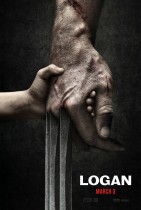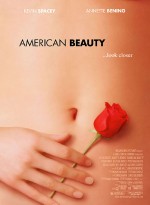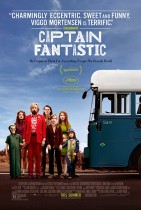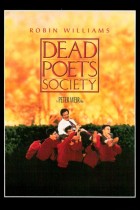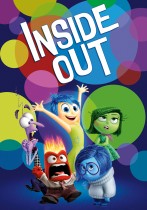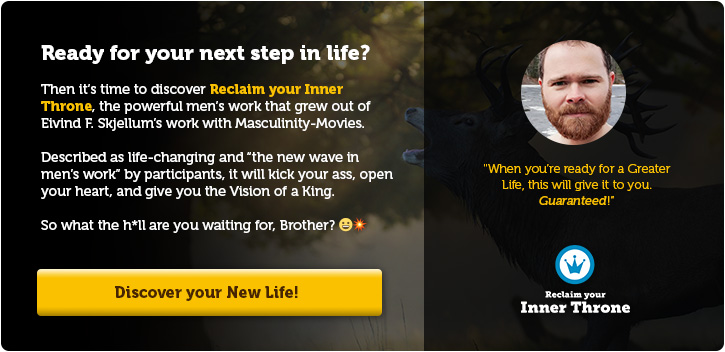The Fountain (2006)
Synopsis
Spanning over one thousand years, and three parallel stories, the Fountain is a story of love, death, spirituality, and the fragility of our existence in this world. It is a love story, but it is also a journey into a man’s deep seated belief that death is a disease and his quest to protect the one he loves from it. The Fountain will have you once again believing that romance and love between two people for all eternity is possible and that as long as the human spirit remains strong, anything is possible – even immortality.
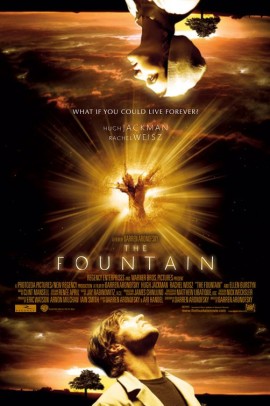
| Genre | Drama |
| Production year | 2006 |
| Director | Darren Aronofsky |
| Male actors | Hugh Jackman |
The Fountain
by Luis Sebastian Corral
What is it that makes us able to cope with great loss? What is it that makes us unable to? How can we see death in a bigger picture than just its immediate horror and tragedy? And how can we learn to surpass death in both flesh and spirit, shedding our minds of our earthly fears altogether?
The Fountain is a movie with such depth, I had to watch it seven times before I really understood the concept fully, and even then there were details left to explore. It is a visual thrill for the eyes and a soothing musical experience for the soul. But most of all, it is a journey of transformation for anyone who has ever felt unable to cope with loss or walked this earth in hope for redemption.
Tom Creo (played by Hugh Jackman) is a doctor and a researcher, working on a cure for cancer by testing on animals. His wife, Izzie (played by Rachel Weiz) is sick with this very disease and Tom is having a very hard time coping with the fear and high probability that his wife is going to die. Overworked, stressed out and a visible mess when confronted about the issue by his boss, Tom is determined to find the cure in time before Izzie passes on.
A coincidence cause him to try a new compound for his experiments, a piece of root from a tree in central America. Meanwhile, Izzie is working on a script for a story. Tom asks how it’s coming, to which she responds she is almost done. She has written most of it into a book of blank pages, using ink and a pen. One night, Tom sits up, unable to sleep. He begins to read the book, and a literary landscape opens before him. Suddenly, he is no longer Tom Creo, but Tomàs, a Spanish Conquistador in Spain during the 1500’s.
Tomàs is just as fiercely determined as Tom, but for a different cause – he serves a queen who is being ransacked of her lands by an evil and fanatical Inquisitor. Tomàs is certain that the only way to save his Queen is to weed the Inquisitor out with a crossbow-bolt between his eyes, but he is interrupted and called to the Queen’s Chambers instead. On his knees before the Queen he weeps that he is saddened to see Spain brought so low, but the Queen insists that there is hope.
A priest has found a dagger in the jungles of central America, a dagger that has proven to be more than just a weapon – it is also a map. Convinced that this is the path to salvation, the Queen asks Tomàs to save Spain by venturing on a quest for the Holy Grail. He boldly accepts this, certain that what his Queen wants is what is best for Spain. As a reward for his stoic and unflinching willingness, she gives him a ring and the promise that when he returns, “she will be his Eve”.
As we return to Tom Creo, we learn that there is yet another version of him, a Tommy who is functioning as a sort of astronaut-monk 500 years into the future. Here, Tommy has found a way to cope with his restlessness and his anger, meditating and practicing a sort of martial arts-like dance to calm his temper. Living in some kind of bubble ascending through the universe, Tommy has also brought with him a tree – the very same tree that the past versions of him sought to use to their own ends. I’m not going to spoil absolutely everything, but there are some very strong indicators that this tree is, in fact, Izzie.
The three versions of Tom continue to intermingle and play on each other throughout the movie. They mean a great lot to each other, because they are connected through time and space. What Tomàs does in the 1500’s has consequences for Tom Creo, who in turn causes the events that lead to Tommy traveling the universe in his bubble-like spaceship. This is the real strength of the movie, as there is no final solution to the riddles and issues that are presented throughout the story. There is just your personal interpretation and how the combination of extraordinary visuals and sound speak to you.
That is not to say there’s not a theme though. I decided to stray away from explaining all the story in detail, but there is a hard, hands-down concept here that is so well-handled you can almost touch and feel it. Tom is obviously unable to handle the loss of his wife; He goes about it with a lot more aggression than the usual Hollywood flick would portray. But the death of your one, true love is an ugly thing indeed and there is no real nice way to go about this sort of thing.
Is Tom being more honest with himself than most of us by showing his anger and sorrow so openly? Is his complete and utter rebellion against death actually just fear of dying himself or is it something else? By the end of the movie, we learn that Tom has learnt quite a lot about loss and Tommy has found something that looks like Nirvana. Does that mean there is hope for even the most lost of us? Tomàs and Tom paid dearly in their versions, but Tommy seems to have made it through as “the victor”. Is redemption not possible without sacrifice? What can we expect to give up in order to keep the things that means most to us?
The bond between Tom and his wife is portrayed beautifully by the magnificent actors Hugh Jackman and Rachel Weisz. The one shot where Tom remembers Izzie running through the hallway is repeated in the movie and it gives a chilling, almost horrifying idea about what it must be like to lose the one closest to you, when a memory like that is burnt into your brain stem for all time. The combination of this beautiful girl, laughing and the music of composer Clint Mansell working his magic creates a symbiotic, almost euphoric sensation, providing some insight into just why Tom is taking this the way he does.
There’s a scene where Tom is left alone on his bed for the first time. Hugh Jackman makes an insane sacrifice as an actor and a human being in this scene, as he lets the darkest pits of his soul pour out while he succumbs totally to the sorrow that Tom Creo feels. He picks up the pen and the ink and make a wedding ring on his finger from it; the symbolical value in this is very important to the ending of the movie. Hugh Jackman has himself said in interviews that the Fountain has been by far his greatest challenge as an actor, and particularly that scene must have cost him quite a lot.
This raises some questions; Is redemption being able to finally let go of the facade? Is it wrong to feel shameful about sobbing, heartbroken and worn? What is it about us men that so often makes us believe that crying is weakness and determination is strength? I’m not saying that determination is not strength, but so often it’s either black or white. As Tom begins to understand some of the things that Izzie has told him during her last days with him, he seems to understand that giving in is not the same as giving up.
Tom, however, is a warrior archetype – a modern warrior, who fights his battles with a low brow and the very determination I just mentioned. Tomàs, very much the same, bud clad in armor and shielded with his religious conviction. He fights like a zealot would; Is it possible to still be a zealot in today’s modern society without believing in a God? Is the belief in love with your close one enough of a zeal to turn you into a fanatic? And why are these people so often depicted as psycho’s when they are really about the most romantic thing ever?
The old fashioned romance is dead and gone in 2012, but Tom is a traditional lover and what he had with Izzie was heaven for him. Of course he would want to fight for that…he would fight until his dying breath. This, in turn, reveals more about why the loss is so hard on him. It’s hard to find that you failed where it counted the most and the consequences are irreparable.
This leads us to Izzie; Just who is she really? Kind hearted, unafraid, universal and a believer. She stares death in the eye, flinching but once and even then she goes about it with an honesty you don’t find in many women. Speaking about your own death when it’s happening is hard on most people. Izzie seems to manage just fine. Her infatuation with death through rebirth and the divinity of the stars seems silly to Tom, but it turns out, eventually, that her deep interest wasn’t so misguided after all.
Maybe knowing that you’re going to die gives you perspective in a way that is simply impossible to obtain if you’re healthy and you know you’re going to stay that way. Maybe Izzie knew something that Tom simply could not fathom until he decided to give in and accept his fear of loss as a part of being human?
As Tomàs in 1500’s Spain, the Queen is Izabel, (also played by Rachel Weisz) a different version of Izzie. Speaking with the air of authority, composed and very beautiful, there is no wonder why a man would go on a dangerous mission to save his beloved country when you are promised eternity with a woman like that. As Tomàs accepts the quest, he is given a ring, a ring which he holds very dear for the rest of his time. In modern time, Tom Creo loses his engagement ring when he washes his hands in the laboratory.
In the scene I mentioned earlier, he picks up the pen and makes a “ring” by continuously plunging it into his flesh with the ink. This ring is transferred over to Tommy, 500 years in the future. The ring itself is not so important as what it symbols; His bond to Izzie and his undying love for her. The fact that it, symbolically, travels through 1000 years in order to end up where it rightfully belongs – on his finger – is a powerful show of just how intense a relationship can become with another person. I guess it’s what they call “true love”.
But the most important aspect of this is that their love never really dies out. It transcends, evolves and burns on, regardless of the challenges it faces. This may come across as rather naive and wishy-washy thinking to some, and I can understand that. Most real life love stories end rather badly, I think the divorce rate is nearly 50% here in Norway at least. But I still believe that divine love, as it is being portrayed in the Fountain, can exist if you allow yourself to fundamentally change the way you see time, death and rebirth. It is the time we have here on earth that is the most precious to us, at least if we relate to western values and our “system” of materialism, beauty and power. If you were suddenly to know that the time beyond your death would be even more precious, how would that affect you and your actions?
I decided to not tell the entire story and instead just ask some difficult, important questions around the themes that the movie represent. I wanted to write something that makes you want to see the movie instead of an aftermath-this-is-what-I-think kind of review. I think the movie should be enjoyed in a quiet, dark room lit with candle lights, red wine and your one true love by your side.
It’s a dark, but very beautiful movie, full of strangeness and visual wonders, a story that will haunt you to the end of time and a musical score that is going to make your spine twitch and your chest hairs crawl. It’s by far one of the best movies I have seen in my entire life and it can be watched again and again and again without ever really losing its appeal. A philosophical journey about death and love. That’s what it is. And I recommend it from the bottom of my heart.

